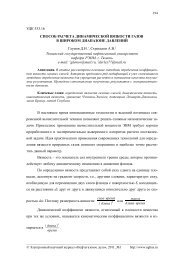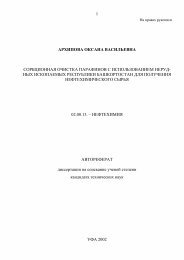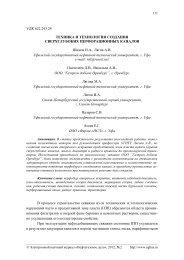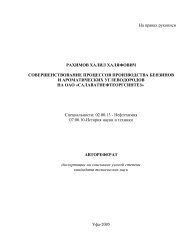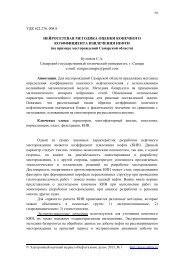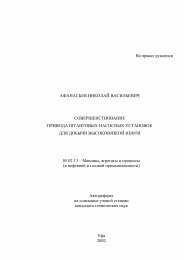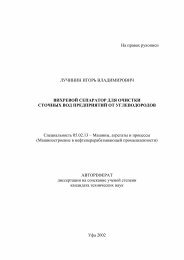FCC PROCESS OF HEAVY FEED STOCK WITH IMPROVED YIELD ...
FCC PROCESS OF HEAVY FEED STOCK WITH IMPROVED YIELD ...
FCC PROCESS OF HEAVY FEED STOCK WITH IMPROVED YIELD ...
You also want an ePaper? Increase the reach of your titles
YUMPU automatically turns print PDFs into web optimized ePapers that Google loves.
kaolin. These catalyst compositions have a crystalline zeolite content of 10 to 25 wt-%<br />
or more and a matrix material content of 75 to 90 wt-%. Catalysts containing 25 wt-%<br />
crystalline zeolite material are preferred. Catalysts with greater crystalline zeolite<br />
content may be used, provided they have satisfactory attrition resistance. Medium and<br />
smaller pore zeolites are characterized by having an effective pore opening diameter of<br />
less than or equal to 0.7 nm, rings of 10 or fewer members and a Pore Size Index of less<br />
than 31.<br />
ZSM-5 and ST-5 type zeolites are particularly preferred since their high coke<br />
resistivity will tend to preserve active cracking sites as the catalyst composition makes<br />
multiple passes through the riser, thereby maintaining overall activity. ZSM-5 additives<br />
are a very effective solution for increasing propylene yield in the <strong>FCC</strong> unit. This<br />
approach gives the refiner a great deal of flexibility, as additive usage can be adjusted<br />
according to changes in propylene demand and to optimize operation within unit<br />
constraints such as wet gas compressor loading. ZSM-5 generates propylene by<br />
selectively cracking olefins in the gasoline boiling range. As the amount of ZSM-5<br />
additive in the catalyst inventory increases, the incremental yield of propylene produced<br />
per percent of additive decreases. Propylene yield reaches a plateau once the ZSM-5<br />
concentration reaches around 10 %. The diminishing effectiveness of ZSM-5 at higher<br />
concentrations occurs because the olefins in the gasoline become depleted [5].<br />
The first catalyst component will comprise the balance of the catalyst<br />
composition. The relative proportions of the first and second components in the catalyst<br />
composition will not substantially vary throughout the <strong>FCC</strong> unit.<br />
The high concentration of the medium or smaller pore zeolite in the second<br />
component of the catalyst composition improves selectivity to light olefins by further<br />
cracking the lighter naphtha range molecules. But at the same time, the resulting smaller<br />
concentration of the first catalyst component still exhibits sufficient activity to maintain<br />
conversion of the heavier feed molecules to a reasonably high level.<br />
<strong>FCC</strong> feedstocks, suitable for processing by this method, include conventional<br />
<strong>FCC</strong> feeds and higher boiling or residual feeds. The most common of the conventional<br />
feeds is vacuum gas oil which is typically a hydrocarbon material having boiling range<br />
of from 343-552 °C and is prepared by vacuum fractionation of atmospheric residue.<br />
Heavy or residual feeds, i.e., boiling above 499 °C, are also suitable.<br />
_____________________________________________________________________________<br />
© Oil and Gas Business, 2009 http://www.ogbus.ru/eng/<br />
5



